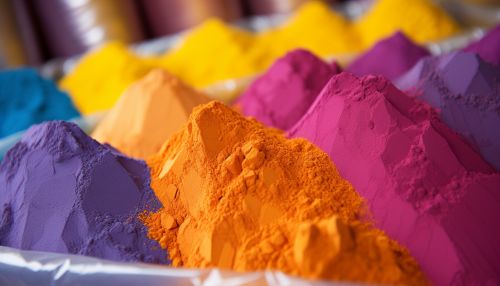Direct Dye
Introduction
Direct dyes, also known as substantive dyes, are a class of dyes characterized by their direct application to the substrate in a neutral or alkaline bath. They are primarily used for dyeing cellulosic fibers, particularly cotton. The term "direct dye" refers to the dye's ability to attach directly to the fiber without the need for a mordant or other type of chemical bonding agent.


Chemistry of Direct Dyes
Direct dyes are generally composed of a water-soluble anionic dye molecule and a cationic compound. The dye molecule is typically a complex organic compound with multiple aromatic rings, which are responsible for the dye's color. These molecules also contain sulfonic acid groups, which make the dye soluble in water and allow it to bind to the fiber.
The cationic compound, often a salt, is used to neutralize the anionic dye molecule and promote its binding to the fiber. This is typically achieved through ionic bonding, where the positively charged cation binds to the negatively charged dye molecule, forming a stable complex that can attach to the fiber.
Application Process
The application process for direct dyes involves several steps. First, the dye is dissolved in water to create a dye bath. The fabric is then immersed in the bath and agitated to ensure even distribution of the dye. The bath is typically heated to a temperature of 60-80°C to facilitate the dyeing process.
After the fabric has been dyed, it is rinsed to remove any unbound dye. The fabric is then dried and finished as desired. The entire process can take several hours to complete, depending on the specific dye and fabric being used.
Properties and Characteristics
Direct dyes are known for their bright and vibrant colors, which can range from light pastels to deep, saturated hues. They are also highly soluble in water, which makes them easy to apply and allows for a wide range of color effects.
One of the main advantages of direct dyes is their ability to bind directly to the fiber without the need for a mordant. This makes them more cost-effective and environmentally friendly than many other types of dyes. However, they also have some disadvantages, such as their relatively low washfastness and lightfastness. This means that fabrics dyed with direct dyes may fade or bleed over time, particularly when exposed to sunlight or washed frequently.
Uses of Direct Dyes
Direct dyes are used in a wide range of applications, primarily in the textile industry. They are commonly used to dye cotton, but can also be used with other cellulosic fibers such as linen, hemp, and rayon. In addition to textiles, direct dyes are also used in papermaking, leather dyeing, and in some types of ink.
Environmental Impact and Sustainability
The environmental impact of direct dyes is a topic of ongoing research and debate. On one hand, direct dyes are more environmentally friendly than many other types of dyes, as they do not require the use of mordants or other chemical bonding agents. However, they also have a high aquatic toxicity and can cause water pollution if not properly managed.
There are ongoing efforts to develop more sustainable practices in the dyeing industry, including the use of natural dyes and the development of more efficient dyeing processes. These efforts aim to reduce the environmental impact of dyeing and promote the sustainability of the textile industry.
